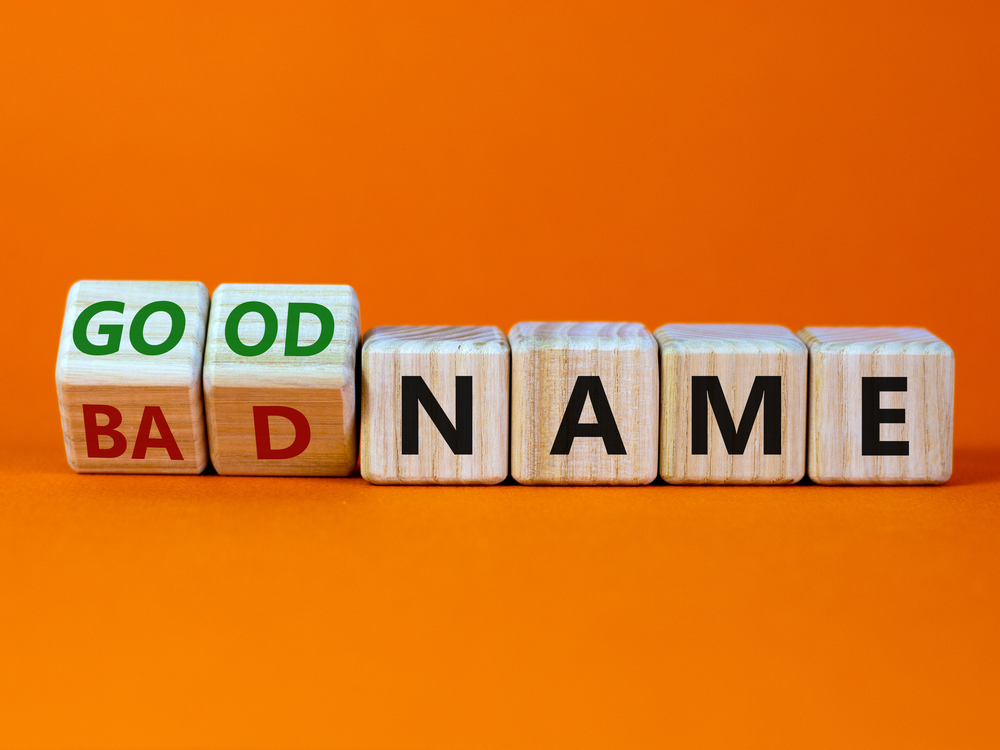Google, Starbucks, PepsiCo, Sony, Nike, Yahoo, Subway, and Nintendo. All are iconic brand names that seem perfect in hindsight. But when the founders conjured up these brand names, was it merely a fortuitous choice? Or is there a process for selecting memorable, catchy names that stand the test of time?
We can quickly answer that question by examining the original names of these well-known brands. Because they didn’t start out quite so memorable or catchy. Here are the names of the aforementioned brands when they were launched:
- Google was known as BackRub
- Starbucks was known as Starbucks Coffee, Tea and Spice
- PepsiCo was known as Brad’s Drink
- Sony was known as Tokyo Tsushin Kogyo
- Nike was known as Blue Ribbon Sports
- Yahoo was known as Jerry’s Guide to the World Wide Web
- Subway was known as Pete’s Super Submarines
- Nintendo was known as Marafuku Company
Each of these brands had a vision when they entered the world, but the names they bore were clunky at best, creepy at worst. For example, how many times a month do you use the word “Google?” It might be employed as a noun (“I’ll look it up on Google.”) or a verb (“I Googled the address of the restaurant.”) Amazingly, the brand not only built an empire worth hundreds of billions, but also introduced a frequently used word into our vernacular.
Obviously, “BackRub” wouldn’t have carried the same power. For example, you would never say tell someone that you “BackRubbed” the address of a restaurant. Finding the right name was indeed a process for the brand, and to their credit, Google’s founders ultimately made an excellent choice.
Good Business Names Sometimes Grow on Trees
Your goal as a visionary entrepreneur is to avoid the “Backrub stage” of the process and smoothly find an ideal name for your business before it launches. Let’s use Apple as a case study for how to come up with a business name correctly. Here’s how Steve Jobs and Steve Wozniak landed on their deliciously simple name.
- Steve Jobs had recently visited a commune called the “Apple Orchard”
- He also really liked apples
- They felt the word was “fun, spirited, and not intimidating”
- The name would also appear near the front of the phone book
- And it was a nod to Isaac Newton, whom Jobs admired
- Finally, it was better than any of the “technical-sounding” names they considered
Based on factors such as personality, history, and strategy, the two Steves launched their company as Apple Computers in 1976. We might take the name for granted now, but it’s not too big of a stretch to imagine that less skilled entrepreneurs might’ve named the business something like “Steve’s Powerful Computing Machines.”
How to Come Up with a Brand Name
Shakespeare did say that a “rose by any other name would smell as sweet,” but this sentiment doesn’t hold true for you and your business. Your new business name has to be distinct and it has to be right.
The issue for many entrepreneurs is that picking a good business name like Apple can feel overwhelming. That’s why we have decided to break down the process for brand-naming into a simple, step-by-step guide so that you can stop spinning your wheels and start launching the next great brand.
Positioning is Everything
The name you decide to call your business plays a crucial role in your brand’s position on the market. Instead of having to explain your business to people, a good brand name communicates your company values, vibes, and purpose in the brief seconds you have a prospect’s attention.
If you want an example of the power of positioning, look now further than the ice-cream brand Häagen-Dazs. You probably don’t know the backstory of this brand, but we’re willing to bet that you associate it with Europe. And that’s exactly what you’re supposed to do.
The name Häagen-Dazs is not a foreign word. It’s not even a real word at all. The brand was started by husband and wife Reuben and Rose Mattus in New York City in 1959. They made up the name because it sounded exotic, conveyed an “aura of the old-world traditions and craftsmanship,” and would help their brand to stand out from the crowd.
Mission accomplished. Most people consider Häagen-Dazs to be premium and to have a legacy of quality. For these reasons, it’s actually one of the few global brands that has never undergone any sort of rebranding.
You could also take the opposite approach as Häagen-Dazs, making your brand feel more familiar and friendly. If you recall, Apple’s name was partially chosen because it made the complex world of computers sound “fun, spirited and not intimidating.”
So how do you want to present your brand to the world? Are you elite or accessible, academic or jovial, technical or intuitive? By distilling the vibe you want to put out into the world, you’ll be able to confidently take the next steps in the process of coming up with a business name.
The Anatomy of Good Business Names
There are no hard-and-fast rules for what a brand name can or cannot be. For example, Adidas just combined the founder’s nickname with three random letters to create a memorable brand name. Xerox, on the other hand, came from a shortening of the word “xerography,” the technical name for the dry copying process that photocopiers use.
Although there’s a lot of latitude when it comes to branding, effective business names always embody at least 3-4 of the following characteristics:
Easy to Remember
Have you ever been listening to your favorite podcast, heard an ad for an interesting product, and then couldn’t buy it because you forgot the brand name the host mentioned? A tough-to-remember name makes it much harder for people to get to your website and become customers. So instead of choosing a complex brand name inspired by the etymology of Greek words combined with the name of the street you grew up on, choose something easy to remember.
In the purest form of the principle you’ll find brands that are actually words, such as Uber, Target, and of course, Apple.
It’s Distinct
How many pizza places do you think exist in the world? Probably hundreds of thousands. But there is only one Domino’s. Regardless of your opinion of the quality of their pizza, you’re never going to confuse Domino’s with the thousands of iterations of “Main Street Pizza” that exist in the world.
Piques Interest
A good name should make people intrigued about what the brand is. For example, when you find out Purple is a mattress company, you probably want to know why they have that name. It pulls you in to learn more about the story of the brand.
Several modern mattress brands have embraced this element of brand intrigue. Instead of explanatory legacy names like Beautyrest or Sleep Number, you get Casper and Blue Burrito. In case you’re wondering, the Blue Burrito gets its name because it’s blue and is rolled up like a burrito for shipping.
Makes Sense
You want to choose a brand name that relates in some way to your core business. It doesn’t have to be a direct, word-for-word match, like “Water Bottles For Sale.” You can obviously be creative.
For example, when Nike decided to change its name from Blue Ribbon Sports in 1978, the founders based the new name on the connection to the Greek goddess of victory. So there was still a tie-in to their role in the sports world, but the brand no longer had a run-of-the-mill name like Blue Ribbon Sports.
It’s Malleable
You should always choose a brand name that can flex and adjust with your business’ needs over time. The last thing you want is to choose a brand name that boxes you in forever.
If you’re launching a Keto supplement company, you might not want to call it KetoProtein. Because when the Keto trend goes away, that name doesn’t give you much wiggle room to change and grow. Something more malleable like FatForFuel, however, is flexible enough to shift with changing tastes in the marketplace. You could keep the prefix “___For” or the suffix “Fuel” as the core of your brand name.
The 4 Types of Unique Business Name Ideas
Now that you know the attributes you should strive for, it’s time to review the 4 types of brand names you can choose from. These buckets will help you as you organize your ideas during the brand development process. Each type of name has its own strengths, so you’ll need to decide which is the best match not just for your business, but for your unique vision.
Generic Brand Names
Names like Hotels.com and Cars.com can be tough to secure for many reasons, the biggest being that these generic domains have high asking prices sometimes reaching seven figures.
Another issue with this category of names is they often don’t meet the above criteria for what a good brand name should do. For example, “Smartphone” might be a solid generic name for your phone product. But it doesn’t pique interest. It is too literal and completely boxes you into one category.
But if you already own a generic yet dominant domain name such as Hotels.com, it can be a solid strategy as it denotes ownership of an industry and is easy for customers to find.
Descriptive Brand Names
These names attempt to describe what the brand/products can do for the end-users. A good example of this is Burger King. You get the core promise of the product right in the name.
Other names that fall in the descriptive category include Pizza Hut, Internet Explorer, and Gmail.. Each of these names describes the underlying business purpose or function.
There’s a subset of descriptive brand names that use proper nouns to great effect. Some, like Florida’s Natural, California Pizza Kitchen, and Nantucket Nectars, are geographic and highlight the brand’s origin or show the scope of service. Others are named for their founders, such as Ben & Jerry’s, Mrs. Fields, and Calvin Klein.
Another subset of descriptive brand names is those that use wordplay to convey their message. Intentionally misspelling parts or all of the name is a common attribute of these names, as seen with Krispy Kreme and Krazy Glue.
Evocative Brand Names
This is where the name doesn’t directly describe the company’s purpose or function, but implies it through words that convey strong imagery and emotions. Take Greyhound, for instance. The business doesn’t sell greyhound dogs, but they quickly help you get from one place to another. So they’re associating the speed and quality of an elite racing dog with their traveling brand.
Another famous example of an evocative brand is Subway. Clearly, it’s not a public transit company. But they do specialize in selling submarine sandwiches, or subs.
One of the key benefits of this kind of name is that the sky’s the limit for your creativity. It can be a great branding approach for any founder who wants a name that’s distinct, rooted in history, or a fun play on words.
Invented Brand Names
In this category you find the brand names that require the most creativity. But many of the most iconic brands of our time come from seemingly made-up words.
Popular examples include Ikea, Kodak, Accenture, Exxon, Pixar, and Verizon. The reason these names don’t always work is because there’s nothing for customers to directly connect with initially—they instead depend on equity. If you’re launching a new product in a new category, you should be cautious about using this type of name.
How to Make Your Business Name Official
Once you’ve landed on your perfect name, you’ve got to lock it down. Because great ideas will always be hot commodities. First, confirm that nobody else is currently using your name. Do this by reviewing relevant industry directories and then confirming the name’s availability using the website of the US Patent and Trademark Office (USPTO).
Of course, your brand should have an online presence. So the next step is to use a service like Name.com (a descriptive brand name if there ever was one) to verify that your preferred domain name is available. Make sure to pick a .com. While other top-level domains (TLDs) like .co and .net are options, most customers will expect there to be a .com at the end of your domain.
Now you’re ready to confirm your business name on your social media accounts, such as Facebook, Twitter, Instagram, and LinkedIn. Even if you don’t have immediate plans to use a particular social channel, create the accounts as soon as possible in order to prevent impostors from snagging the names from you. You’ll then be able to activate the account at your leisure.
Trademarking your name isn’t essential when you’re first getting started. But it’s a good idea because you never know when someone else might try to claim the name either out of ignorance or maliciously.
Legally speaking, you can only trademark your business when it’s a unique name and not merely a description. For example, you couldn’t register “Baseball Bats” as a business name because it’s too broad of a description. A name like “Carbon Excel Bats,” on the other hand, is unique enough to be registered as a trademark.
Pick a Great Business Name, Get a Great Start
Knowing how to choose a business name is a key skill that all entrepreneurs must develop. It’s often tempting to overlook the process because your heart and mind might be consumed by the big idea that kicked off this entrepreneurial journey in the first place. Yes, there are hundreds of other important elements of the business creation process fighting for your attention, but don’t simply pick one of the first business names that comes into your head.
The important thing is to start your business out on the right foot. Aim for Google, not BackRub. Yahoo, not Jerry’s Guide to the World Wide Web. PepsiCo, not Brad’s Drink.
Remember, you won’t be welded to your exact brand name forever. You might decide to evolve it while your business grows, just as Dunkin’ Donuts dropped the “Donuts” from their name in 2018 to reflect the breadth of the menu options. As long as your name’s malleable and you approach such decisions with strategy and thoughtfulness, you’ll be in great shape.
For more information on how to shape your brand and market it to the world, visit our library of free training courses. This curriculum is presented by top entrepreneurs who know how to build a brand that lasts.


















